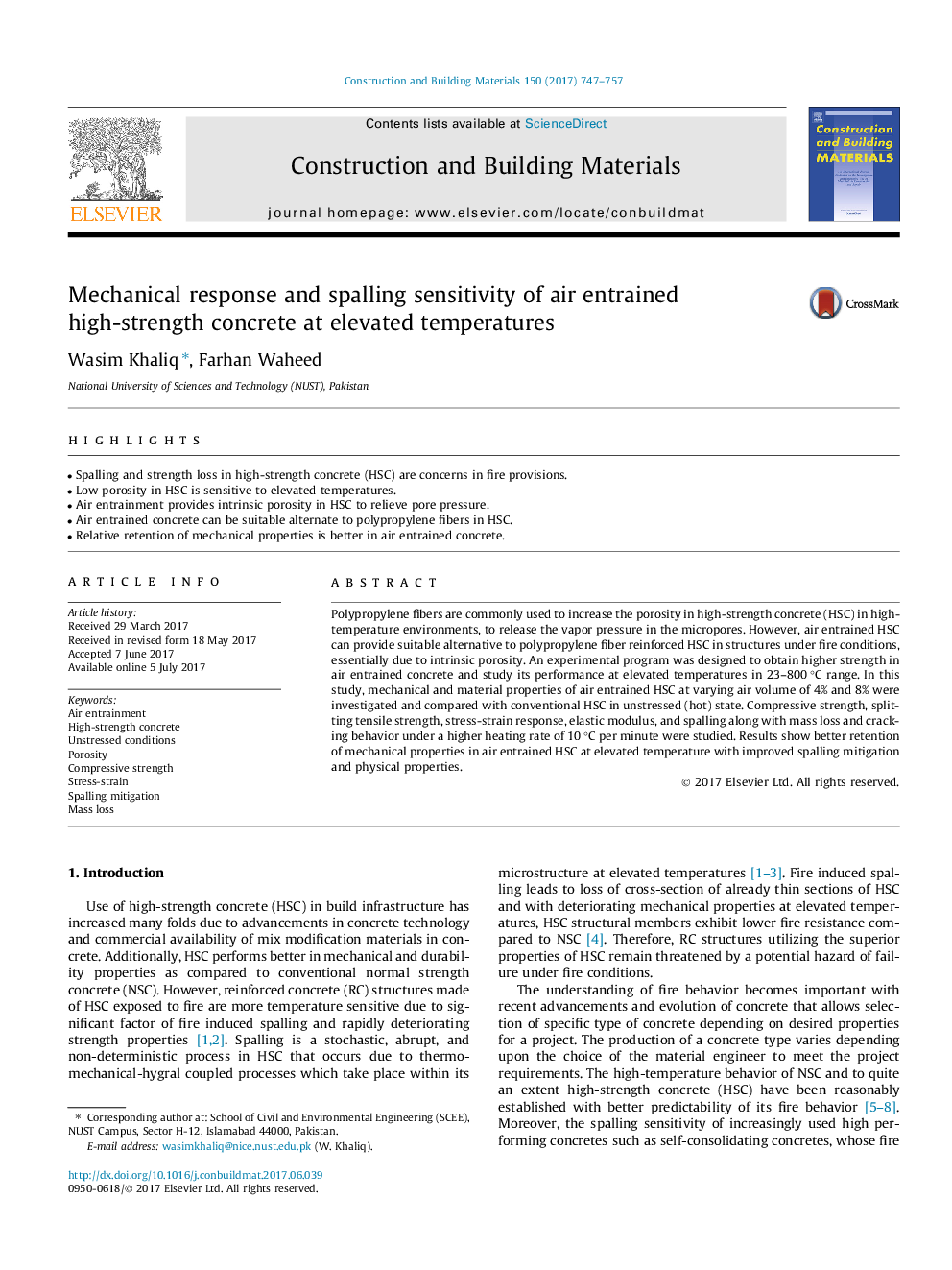| Article ID | Journal | Published Year | Pages | File Type |
|---|---|---|---|---|
| 4918328 | Construction and Building Materials | 2017 | 11 Pages |
Abstract
Polypropylene fibers are commonly used to increase the porosity in high-strength concrete (HSC) in high-temperature environments, to release the vapor pressure in the micropores. However, air entrained HSC can provide suitable alternative to polypropylene fiber reinforced HSC in structures under fire conditions, essentially due to intrinsic porosity. An experimental program was designed to obtain higher strength in air entrained concrete and study its performance at elevated temperatures in 23-800 °C range. In this study, mechanical and material properties of air entrained HSC at varying air volume of 4% and 8% were investigated and compared with conventional HSC in unstressed (hot) state. Compressive strength, splitting tensile strength, stress-strain response, elastic modulus, and spalling along with mass loss and cracking behavior under a higher heating rate of 10 °C per minute were studied. Results show better retention of mechanical properties in air entrained HSC at elevated temperature with improved spalling mitigation and physical properties.
Related Topics
Physical Sciences and Engineering
Engineering
Civil and Structural Engineering
Authors
Wasim Khaliq, Farhan Waheed,
